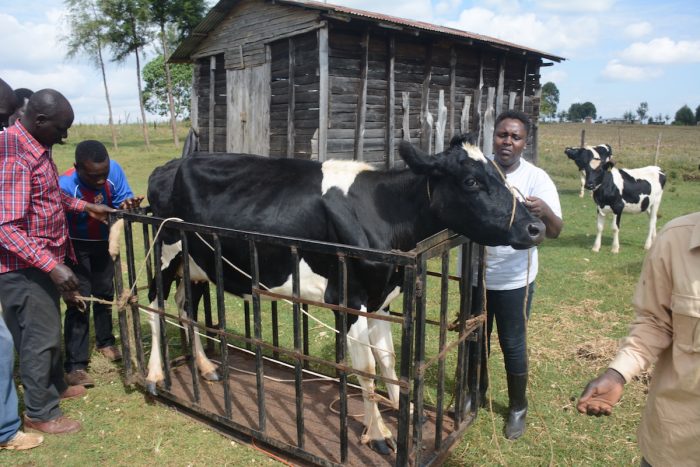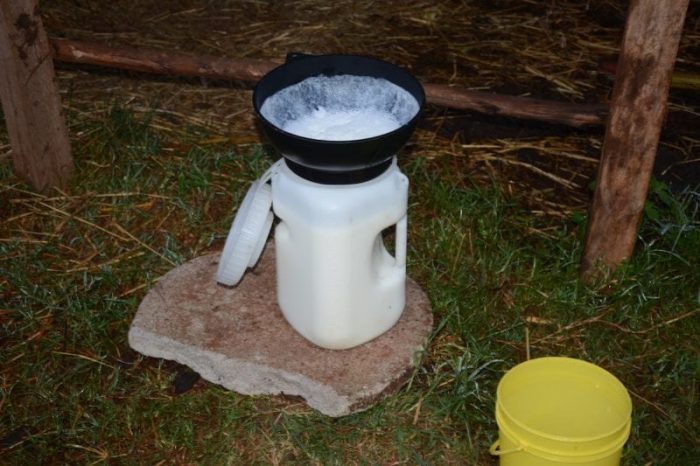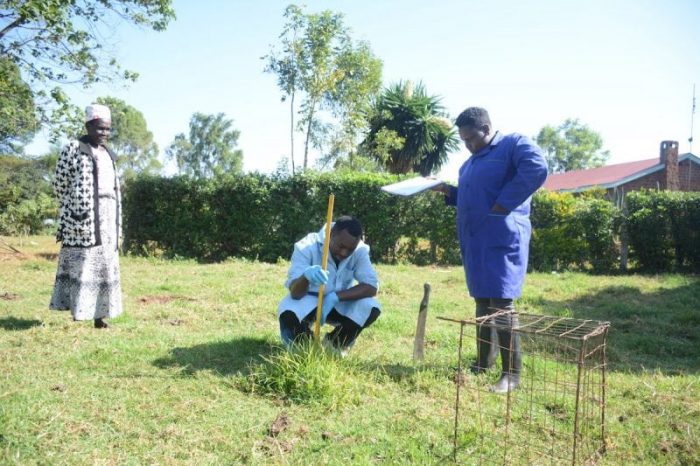
In Marrakesh in 2016, nearly 200 countries, including most of Africa, reaffirmed their commitment to monitor and reduce man-made greenhouse gas (GHG) emissions. In light of this, there is great need to provide accurate assessments of anthropogenic GHGs, both for monitoring, reporting and verification (MRV) and the development of nationally determined contributions (NDC) to mitigate GHGs.
In contrast to Europe and North America (where most GHGs originate from energy generation and transport), in Africa, agriculture is the largest sector of the economy, employing 70 -90% of labor, accounting for 45% of GDP and producing (including emissions from land-use change) approx. 50% of anthropogenic GHG. Most of these emissions are related to livestock (mainly cattle, sheep and goats).
Presently estimates of GHGs from African livestock systems mainly rely on default protocols (TIER I) developed by the Intergovernmental Panel on Climate Change (IPCC). These use data from livestock systems in Europe and the US (themselves over 20 years old) combined with expert opinion. The IPCC itself stresses the desirability of more accurate assessment of important sectors or key categories, i.e. sources or sinks of GHGs which significant influence a country’s total inventory of greenhouse gases in terms of the absolute level, the trend, or the uncertainty in emissions and removal, and provides guidelines for deriving better estimates of GHGs (TIER II).
Unfortunately, uncertainty about the accuracy of TIER I estimates is compounded by the difficulty of getting newer more accurate data for TIER II– African farmers typically do not keep the sort of formal records that would be used to derive better GHG estimates. A further problem is that some important assumptions used in creating TIER II estimates may not apply in parts of Africa.

Credit: J. P. Goopy
TIER I estimates, as well as current TIER II guidelines, assume that animals have unrestricted access to feed and that they either gain weight or that their weight is unchanging. Most agriculture in Africa is rain-fed and seasonal, which tends to impact on feed availability for livestock. Thus for parts of the year animals may be losing weight. Because feed intake is the biggest driver of methane production and because ruminants use body reserves with a higher efficiency than ingested feed, seasonality of feed supply has important implications for the estimation of ruminant methane production throughout the year.
Considering the potential importance of fluctuations in feed availability (and quality) on estimates of enteric CH4emissions, researchers from the Mazingira Centre* at the International Livestock Research Centre (based in Nairobi, Kenya), developed a different approach that would allow us to produce emission estimates by making measurements to determine energy expenditure and thus feed intake, without the need to rely on assumptions of unlimited feed availability.
We recently completed two studies1 using this novel methodology to derive more accurate GHG estimates for smallholder livestock systems in East Africa. Visiting farms several times throughout the year, we made repeated measurements of livestock-related to their productivity (weight, locomotion, milk production, etc.), and availability of on and off-farm feed resources. We also analyzed feed samples to produce estimates of digestibility by season and region. We then used these data to estimate daily methane production by season, area, and class of animal to produce new emission factors (EF) for annual enteric CH4production.

Credit: J. P. Goopy
These studies have highlighted substantial discrepancies between TIER I and TIER II emission estimates in African livestock systems and also demonstrated the great heterogeneity of these systems. We found that Emission Factors (the total amount of enteric methane produced by an animal in one year) were up to 40% less than those produced by TIER I estimates – but that this was not uniform between or even within regions. Contrary to what is often assumed in smallholder systems, in the study areas most animals were kept at pasture year round with cut and carry feeding sometimes used to supplement and animals were also let to graze stover in maize fields after harvest.
The stock was universally corralled in bomas (stockyards) overnight usually without access to feed or water. There were clear seasonal effects of feed restriction through the observed live weight losses, especially in productive females. This effectively resulted in lower enteric methane production as cattle mobilized endogenous tissue to meet energy requirements, rather than meeting them through consumption (and fermentation) of feed. So while emissions on a per capita basis are low and much lower than for livestock in Western systems, the Emissions Intensities (i.e. emissions per unit of a product such as milk or meat) have been estimated to be approx. one order of magnitude higher. However, this is still subject to ongoing investigations.

Credit: J. P. Goopy
Our studies also highlighted the heterogeneity present in ostensibly similar production systems. This implies that consideration needs to be given to identifying and quantifying the sources of variability in attempting to develop regional EFs in Africa. Our studies are the first of their kind for Sub-Sharan Africa relying on animal measurements, and highlight the value of using a robust methodology which does not rely on the (often invalid) assumption of ad libitum intake in systems where intake is known or likely to be restricted.
These findings are described in the articles entitled, A new approach for improving emission factors for enteric methane emissions of cattle in smallholder systems of East Africa – Results for Nyando, Western Kenya, recently published in the journal Agricultural Systems and Improved region-specific emission factors for enteric methane emissions from cattle in smallholder mixed crop: livestock systems of Nandi County, Kenya, recently accepted in the journal Animal Production Science.
This work was conducted by J. P. Goopy from the International Livestock Research Institute and the University of Melbourne, A. A. Onyango from the International Livestock Research Institute and the University of Hohenheim, U. Dickhoefer from the University of Hohenheim, and K. Butterbach-Bahl from the International Livestock Research Institute and the Karlsruhe Institute of Technology.
*Swahili for “environment”
References
- JP Goopy, AA Onyango, U Dickhoefer, K Butterbach-Bahl (2018) A new approach for improving emission factors for enteric methane emissions of cattle in smallholder systems of East Africa–Results for Nyando, Western KenyaAgricultural Systems161, 72-80
- P.W. Ndu, B.O. Bebe J.O. Ondiek, K. Butterbach-Bahl , L. Merbold J.P. Goopy (2018) Improved region-specific emission factors for enteric methane emissions from cattle in smallholder mixed crop: livestock systems of Nandi County, Kenya Animal Production Science (Accepted).









